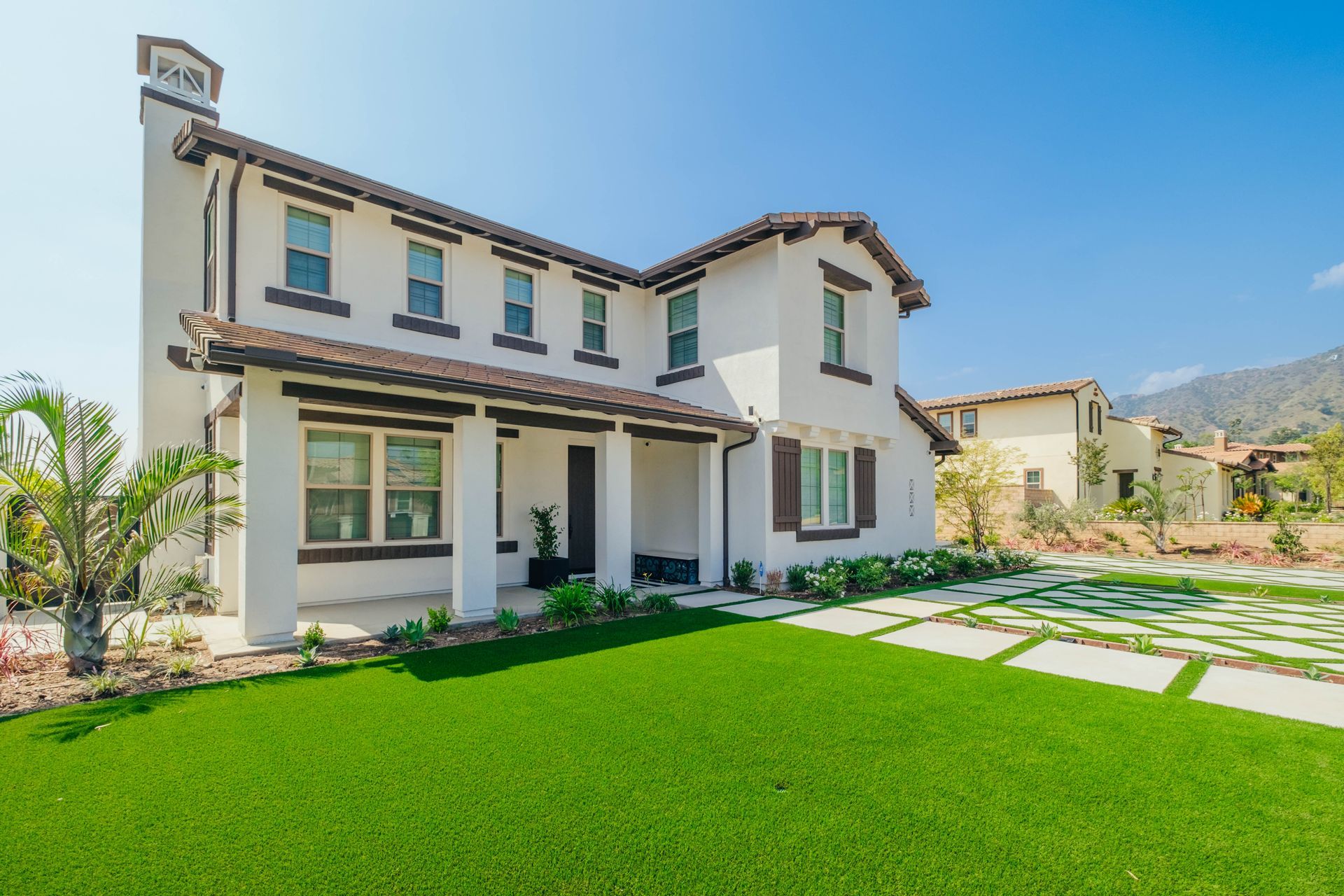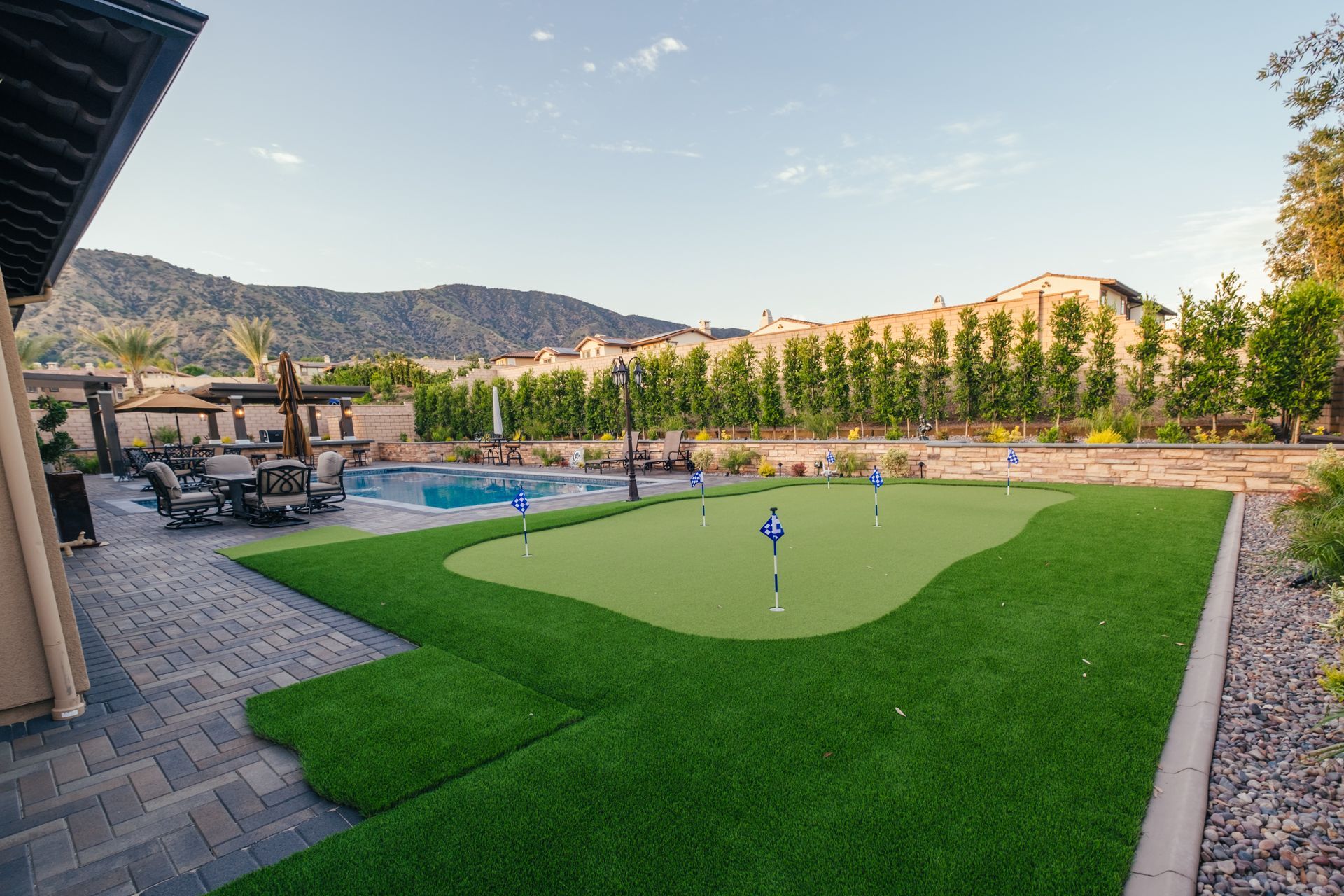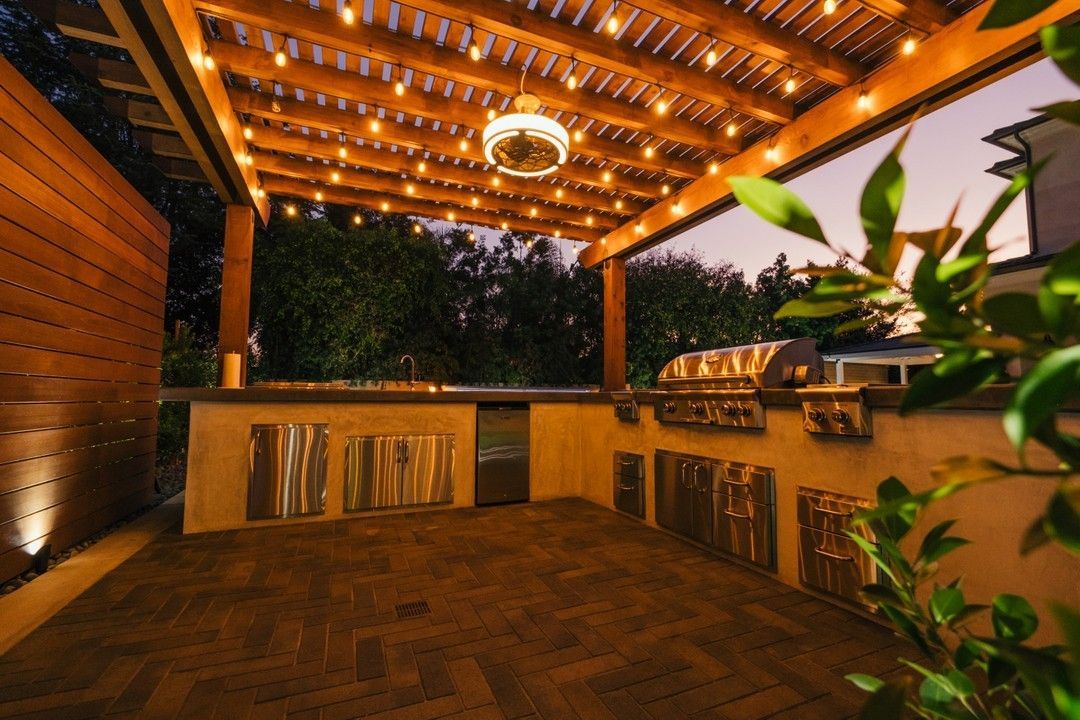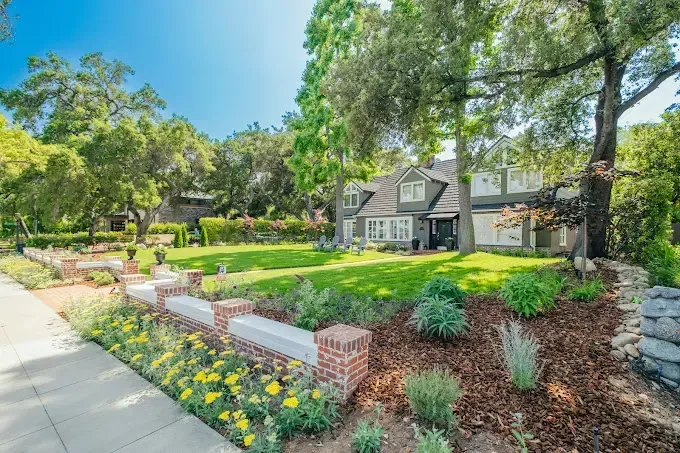Artificial Turf vs. Natural Grass: Complete Cost Comparison for SoCal Homeowners

Let's be real—maintaining a beautiful lawn in Southern California can feel like a full-time job that comes with a hefty water bill. Between the drought restrictions, the scorching summer heat, and the cost of keeping grass green year-round, many homeowners are wondering if there's a better way. At Vivid Landscape, we get asked about artificial turf versus natural grass almost daily, and honestly, the answer isn't always what you'd expect.
The artificial turf industry has come a long way from those orange and green carpets you remember from old football stadiums. Today's synthetic grass looks incredibly realistic, feels great underfoot, and can solve a lot of the headaches that come with traditional lawns. But is it worth the investment? Let's break down the real costs—both upfront and long-term—so you can make the best decision for your property and lifestyle.
The Real Cost of Natural Grass in Southern California
Before we dive into artificial turf, let's get honest about what that beautiful natural lawn is actually costing you. Most homeowners only think about the obvious expenses, but the true cost of natural grass goes way beyond your monthly water bill.
Water costs are the big one. The average Southern California lawn needs about 1-2 inches of water per week during growing season. For a typical 1,000 square foot lawn, that's roughly 600-1,200 gallons weekly. At current water rates in LA County (averaging around $4-6 per 1,000 gallons), you're looking at $125-400 per year just in irrigation costs. And that's assuming you're not dealing with drought surcharges or tiered pricing that kicks in when you exceed baseline usage.
Then there's maintenance. Regular mowing runs about $40-80 per visit if you hire it out. Most lawns need cutting every 1-2 weeks during growing season, so figure $800-2,000 annually just for mowing. Add fertilization ($200-400 per year), overseeding ($300-600), pest control ($200-500), and occasional repairs or reseeding of damaged areas ($100-500), and you're easily looking at $1,500-4,000 per year in maintenance costs.
Don't forget about equipment. If you're the DIY type, factor in mower purchases ($300-1,500), regular maintenance and repairs ($100-300 annually), fertilizer spreaders, sprinklers, and all the other tools that lawn care requires. Even if you already have equipment, it's costing you storage space and time.
Time is money too. The average homeowner spends 3-4 hours per week on lawn maintenance during peak season. That's 150+ hours annually—time you could spend doing literally anything else.
Artificial Turf: The Upfront Investment
Now let's talk synthetic grass. The biggest shock for most homeowners is the initial cost, but once you understand what's involved, it makes more sense.
Quality artificial turf installation typically runs $8-15 per square foot for residential projects. So that 1,000 square foot lawn we talked about earlier? You're looking at $8,000-15,000 for professional installation. Yeah, it's a chunk of change upfront, but stick with us—the math gets interesting.
What goes into that cost? It's not just rolling out carpet. Professional installation involves excavating existing grass and soil (usually 3-4 inches deep), installing a proper base material for drainage, laying and securing the turf, adding infill material, and creating clean edges. Good installers also include things like antimicrobial treatments and proper drainage systems that prevent issues down the road.
Quality matters—a lot. Cheap artificial turf looks cheap and won't last. Professional-grade synthetic grass uses advanced materials that look and feel remarkably like real grass. The backing is more durable, the fibers are designed to bounce back from foot traffic, and UV protection keeps colors from fading in our intense SoCal sun.
Breaking Down Long-Term Costs
Here's where things get really interesting. Let's look at a 10-year cost comparison for that same 1,000 square foot lawn:
Natural Grass (10 years):
- Water: $1,250-4,000
- Maintenance: $15,000-40,000
- Equipment/repairs: $1,000-3,000
- Total: $17,250-47,000
Artificial Turf (10 years):
- Initial installation: $8,000-15,000
- Maintenance: $200-500 (occasional cleaning)
- Repairs: $200-800 (replacing small damaged sections)
- Total: $8,400-16,300
Those numbers assume conservative maintenance costs for natural grass. If you're hiring premium lawn care services or dealing with significant pest/disease issues, natural grass costs can easily exceed our high estimates.
The Hidden Benefits of Artificial Turf
Beyond the pure dollar comparison, artificial turf offers benefits that are hard to quantify but definitely valuable:
Water conservation is huge in California. We're talking about eliminating 600-1,200 gallons of weekly water usage. During drought restrictions, this can literally be the difference between complying with usage mandates and facing penalties.
No more weekend lawn slavery. Remember those 150+ hours annually? You get them back. Sleep in on Saturday mornings. Take weekend trips without worrying about sprinklers. Actually use your backyard instead of constantly maintaining it.
Year-round perfection. Your lawn looks great in January and July. No brown patches, no seasonal die-off, no waiting for overseeding to take hold. Kids and pets can play on it immediately after rain instead of creating muddy messes.
Durability is impressive. Quality artificial turf handles heavy foot traffic, pets, outdoor furniture, and even things like bounce houses for kids' parties without damage. Natural grass would be destroyed by half of these activities.
When Natural Grass Still Makes Sense
Look, we're not anti-natural grass. There are definitely situations where real turf is the better choice:
If you genuinely enjoy lawn care, there's something satisfying about maintaining a beautiful natural lawn. Some people find it relaxing and take pride in the process.
Large areas can favor natural grass financially. The per-square-foot cost of artificial turf means that massive lawns (think 5,000+ square feet) might be prohibitively expensive to convert all at once.
Some HOA restrictions still exist. While most Southern California communities have updated their rules to allow artificial turf, a few older HOAs still have restrictions. Always check before proceeding.
Environmental considerations vary. While artificial turf saves water, it's made from petroleum-based materials and isn't biodegradable. If environmental impact is your top concern, drought-resistant native plants might be better than either grass option.
Quality Matters: Why Professional Installation Pays Off
Here's something we see regularly at Vivid Landscape: homeowners who tried to save money with DIY installation or discount contractors, then called us to fix problems. Poor installation shows immediately and creates ongoing issues.
Drainage problems are the biggest concern. Without proper base preparation and drainage planning, you'll have standing water, uneven surfaces, and potential damage to your home's foundation. Professional installers understand local soil conditions and drainage requirements.
Edge work and transitions separate amateur from professional installations. Clean transitions between turf and hardscaping, proper securing methods, and attention to detail around obstacles make the difference between an obvious fake lawn and something that looks naturally beautiful.
Warranty protection comes with professional installation. Quality installers stand behind their work and use materials that include manufacturer warranties. DIY installations void most product warranties, leaving you on your own if problems develop.
Making the Decision: Questions to Ask Yourself
Ready to decide? Consider these key factors:
How much do you currently spend on lawn maintenance? If you're already paying $200+ monthly for lawn care, artificial turf starts looking financially attractive much sooner.
What's your water situation? If you're constantly fighting brown patches, dealing with water restrictions, or seeing high utility bills, synthetic grass addresses multiple problems simultaneously.
How do you use your outdoor space? Families with active kids, pet owners, and people who entertain frequently often find artificial turf dramatically improves their lifestyle.
What's your long-term plan? If you're planning to stay in your home for several years, the long-term savings make more sense than if you're moving soon.
The Maintenance Reality Check
Let's be clear about artificial turf maintenance—it's not zero, but it's minimal. Occasional rinsing, removing debris, and brushing high-traffic areas keeps it looking great. Pet owners need to rinse areas occasionally and may want to use enzyme cleaners periodically. Total annual maintenance time? Maybe 10-15 hours versus 150+ for natural grass.
ROI and Property Value
Quality artificial turf installation typically adds value to your property, especially in water-conscious Southern California. Real estate professionals report that well-done synthetic lawns are viewed positively by buyers, particularly those with busy lifestyles or environmental concerns.
The exact ROI varies by neighborhood and market conditions, but most homeowners see 60-80% of their installation cost reflected in increased property value. Combined with ongoing savings, the financial case becomes pretty compelling.
Ready to Make the Switch?
The artificial turf versus natural grass decision ultimately comes down to your priorities, lifestyle, and long-term plans. But for most Southern California homeowners, the math is pretty clear: synthetic grass saves money, time, and water while providing a consistently beautiful lawn.
At Vivid Landscape, we've installed hundreds of artificial turf systems throughout Los Angeles County, Orange County, and the Inland Empire. We've seen firsthand how the right synthetic grass transforms both properties and lifestyles.
Ready to explore your options? Contact Vivid Landscape for a consultation and estimate. We'll assess your specific situation, discuss quality options that fit your budget, and show you exactly how artificial turf can work for your property. Because life's too short to spend every weekend mowing the lawn.














